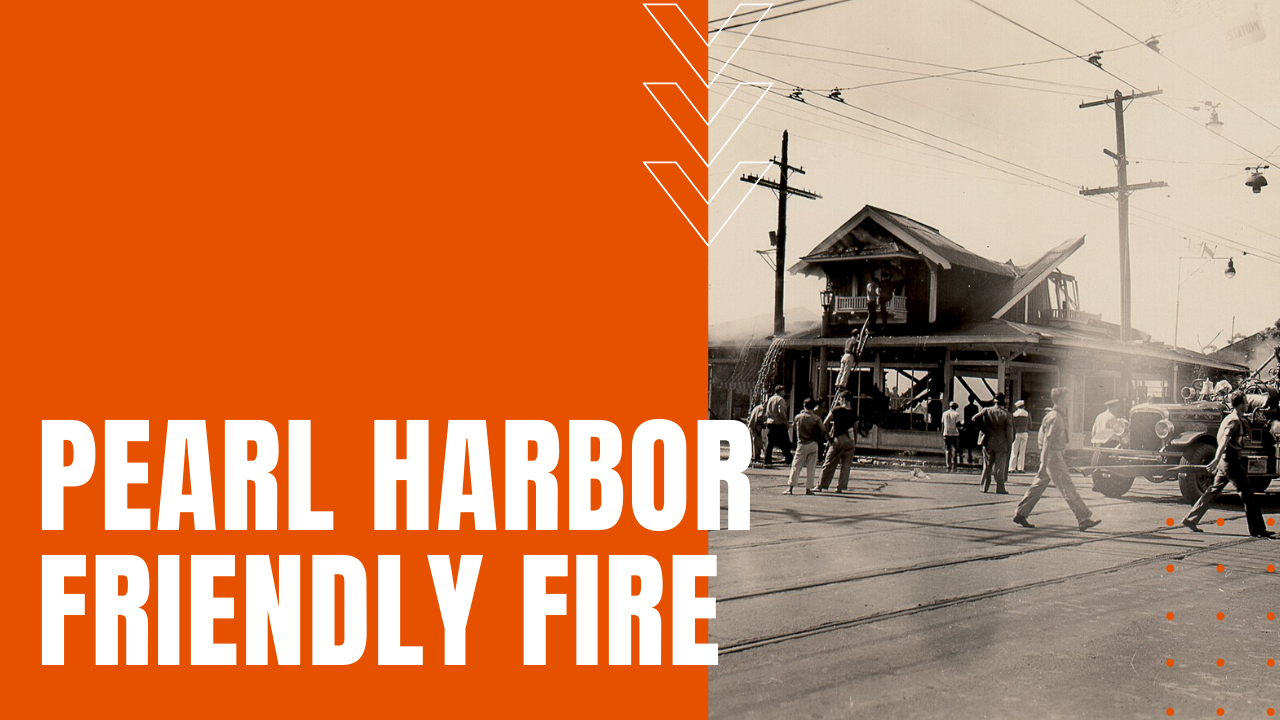Friendly Fire Casualties at Pearl Harbor

After years of imposed trade sanctions by the United States in response to Japan’s expansionist aggression in China and Southeast Asia, the Empire of Japan came to the conclusion that the only way to increase their influence in the the region was to take out the American’s Pacific Fleet based at Pearl Harbor, Hawaii.
Attack Begins
After months of planning and practice, at 8:00 AM Sunday morning, December 7th, 1941, Japanese warplanes filled the sky over Honolulu, reeking havoc on the American’s idle and unsuspecting Pacific Fleet warships. The two-wave attack by 353 Japanese warplanes was over in less than two hours, crippling or destroying nearly 19 American ships and more than 188 aircraft, taking the lives of 2,403 sailors and soldiers, while wounding an additional 1,178 people.
Absent Artillery Crews
During the attack, to heap misfortune upon misfortune, a day earlier, the Navy had undertaken a large-scale air defense exercise, before giving anti-aircraft crews town leave beginning on the evening of December 6th, leaving the defense of Pearl Harbor in the hands of five-inch naval guns, which were designed to engage surface targets rather than Japanese dive bombers.
Shelling Honolulu
During the heat of battle, both time fuse and contact artillery shells took over the roll of Honolulu’s idled anti-aircraft batteries, and while 55 Japanese airmen were killed during the attack, civilian casualties in Honolulu and elsewhere took direct hits by the fusillade of shells that missed enemy targets and landed in the streets surrounding Pearl Harbor. 32 people died in Honolulu during the attack, including a three-month old baby, while another 36 civilians were killed in other communities surrounding the harbor, including Japanese-American restauranteur Jitsuo Hirasaki, who was killed instantly when a 55 pound shell exploded inside his diner.
American Goes to War
Three of his children were killed in the explosion, along with their fourteen-year-old cousin and seven young men who just happened to be eating breakfast. A day later, at the beginning of his speech to Congress requesting a declaration of war, President Franklin D. Roosevelt delivered a speech which still resonates within the collective minds of Americans, making friendly fire casualties at Pearl Harbor, yet another tragic loss of life in the insanity of war.
